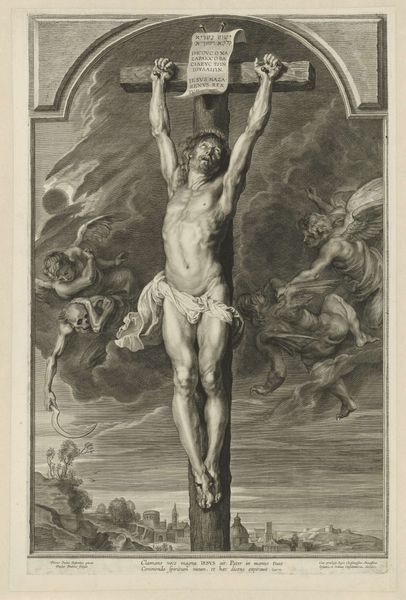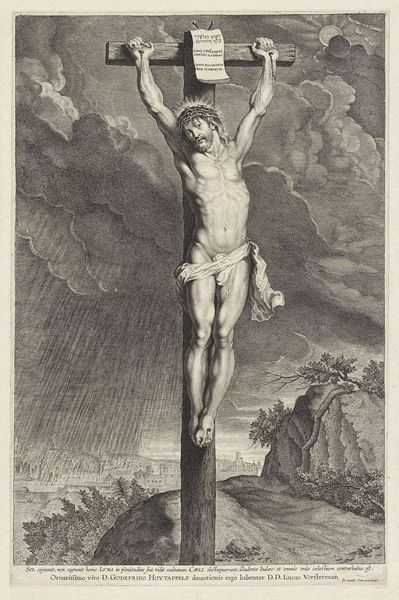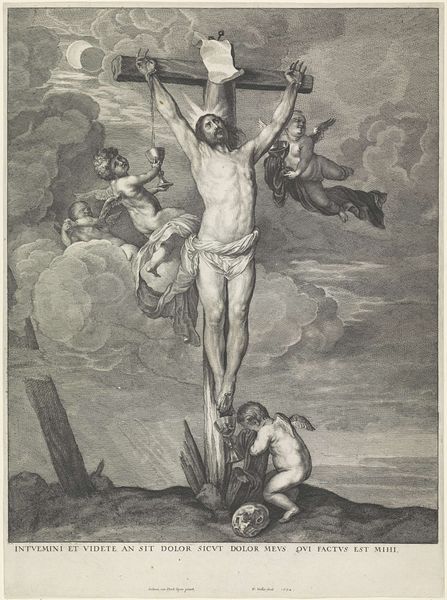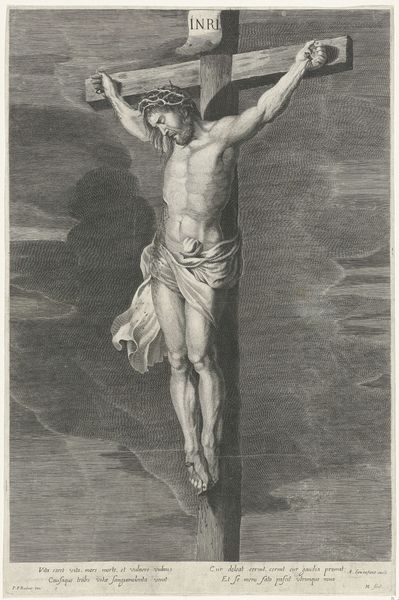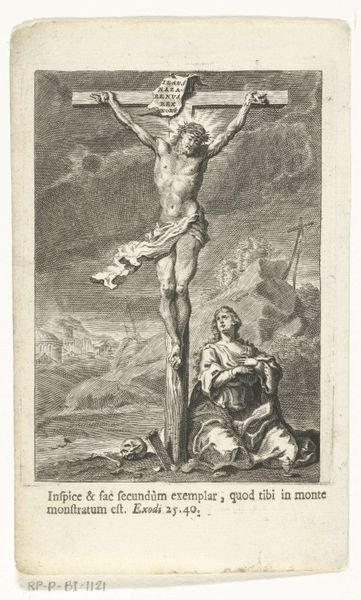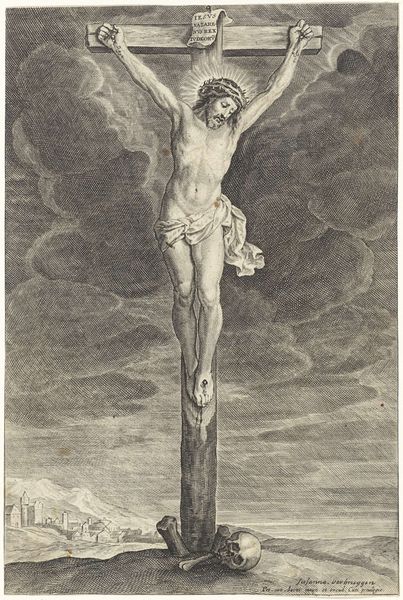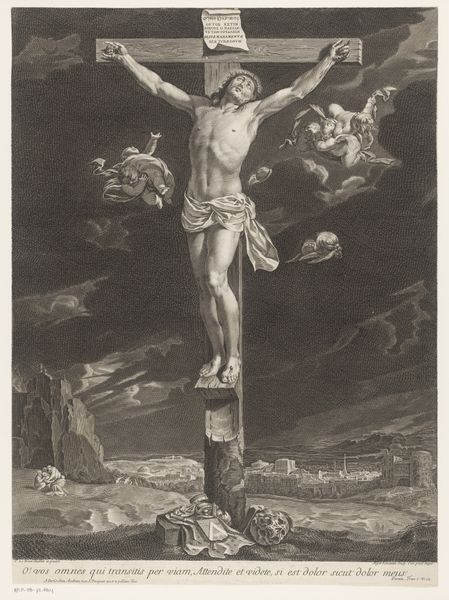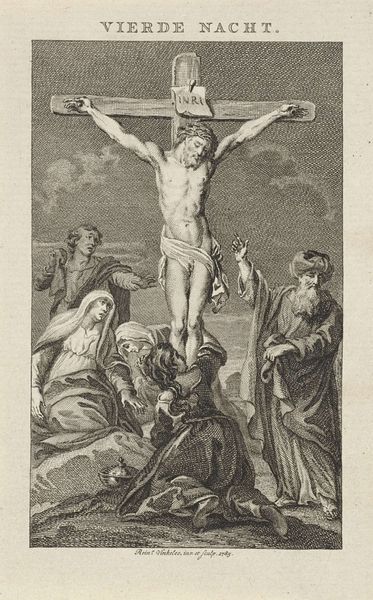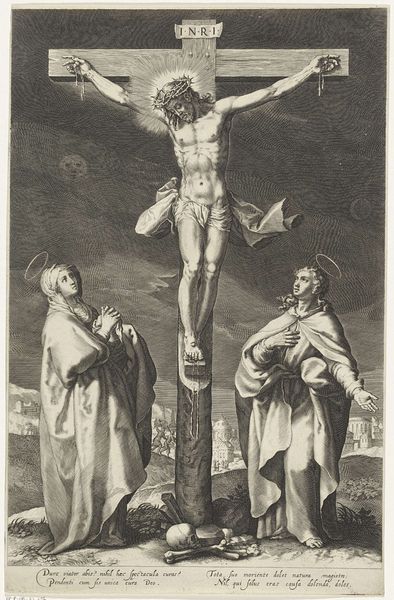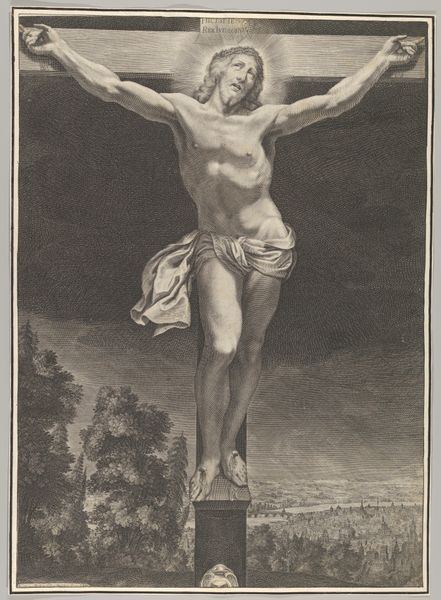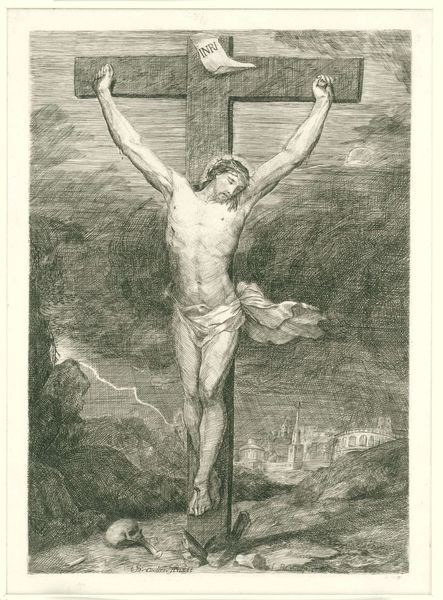
print, engraving
#
portrait
#
baroque
# print
#
old engraving style
#
figuration
#
line
#
history-painting
#
engraving
Dimensions: height 585 mm, width 382 mm
Copyright: Rijks Museum: Open Domain
Pieter van Sompel created this engraving of the Crucifixion in the early 17th century, after a painting by Peter Paul Rubens. Depicting Christ on the cross, the image reflects both religious devotion and the complex political landscape of the time. Engravings like this one played a crucial role in disseminating artistic ideas across Europe. Printed in the Netherlands, this work shows the influence of the Catholic Reformation and the ways in which artists and institutions helped to promote certain religious and political views. The detailed rendering of Christ's suffering, combined with the classical composition, demonstrates how artists sought to engage viewers emotionally and intellectually. This was a time of religious conflict and rapidly solidifying national identities. The image's blend of religious fervor and classical style speaks to the cultural tensions of the era. To fully appreciate this work, we can consult historical archives, religious texts, and studies of print culture. These resources shed light on the artist’s intentions and the social context in which the image was produced and consumed. The meaning of art always depends on its historical and institutional circumstances.
Comments
No comments
Be the first to comment and join the conversation on the ultimate creative platform.
